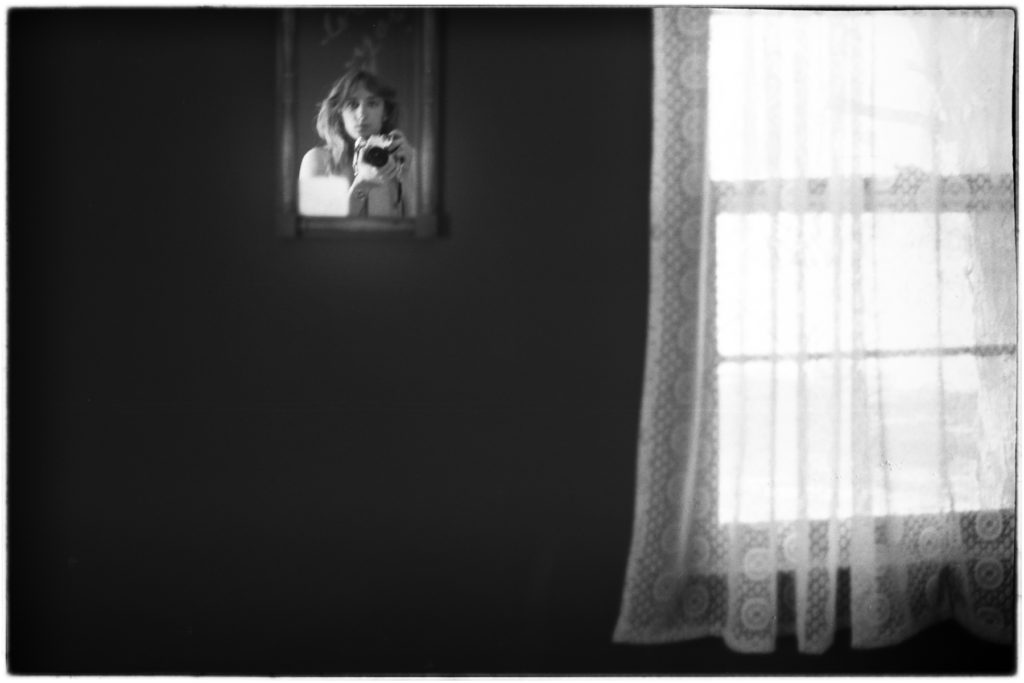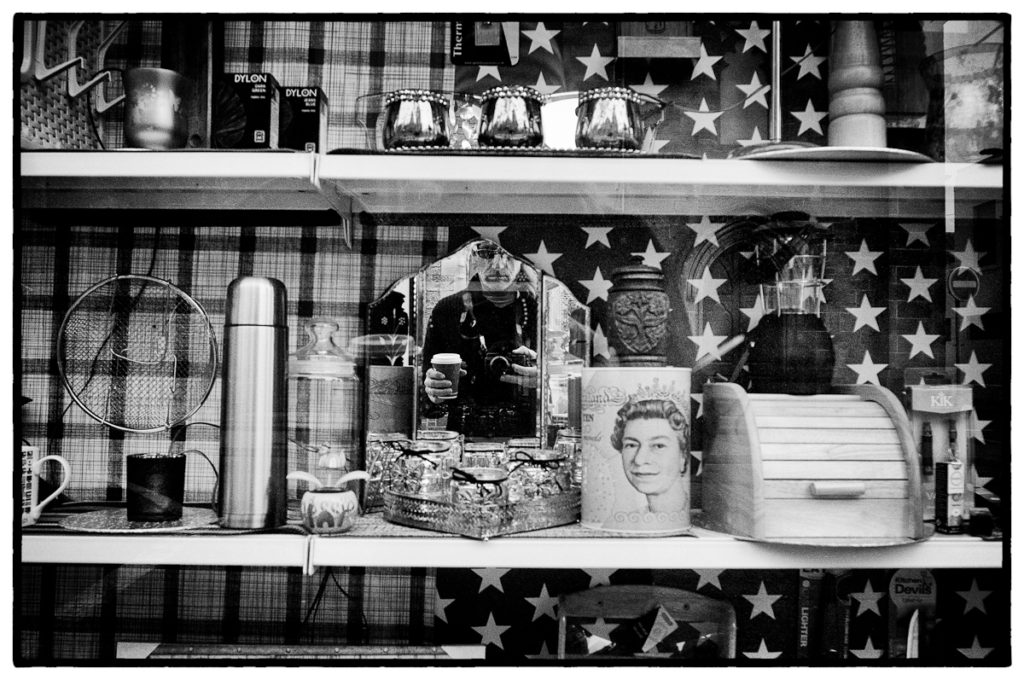
‘Who sees the human face correctly: the photographer or the mirror?’ Picasso
I love this quote. It gets at something paradoxical about mirrors. I got thinking about mirrors for two reasons: first, I’m currently reading Jorge Luis Borges’ Labryrinths, a collection of his short stories that deal with time, identity and imagination. Borges was intrigued by mirrors, finding them “monstrous,” shot through with deep philosophical paradoxes; second, given I’m pretty much confined to the house these days, I’ve been going through my photo archives and trying to put some order to all the chaos, and I’m uncovering lots of photos of me in the mirror. Mind you, most of them were taken when I was young, long before the selfie was a thing. At the time they were just throwaways, last exposures on a roll that needed to be developed. Now they’re the keepers. Funny what time does. I’m glad I had the foresight to take them, and thankful that photography gave me the means to do so.
I was 17 when I took that picture. I still have a vague remembrance of doing it. (The fact of the memory says something about a continuity between that 17 year old and me.) Some young lady had written something in lipstick on the mirror and I thought to preserve it with a photo. I ended up getting the photo above, which to me is much more interesting than what was written by someone long forgotten. Apparently, that’s ‘me’, although I feel at most a tenuous connection to the person shown. What that connection is I’m not sure. Is that really me? I do remember the camera – a beat up black paint Nikon F body with a scruffed up chrome FTN Photomic prism, my first ‘real’ camera. I remember being so proud of it, as if it had some magical power to produce better photographs than the consumer grade cameras my parents had heretofore given me. Ironically, it probably did allow me better photos by giving me a confidence in a vision that was capable of being revealed by such a sophisticated instrument.
I love the serendipity of the picture too, the off-kilter framing with the window and curtains hinting at something other than a mere reflection of who I was. That 17 year old kid, learning about what made a compelling photo, I’m sure would have passed this one up when reviewing its contact sheet, everything about it being wrong from what Popular Photography told me made a good photo. Now, I find it a really compelling photo, which should tell me something about the relationship of that person and the person I’m now.
Views: 14














